#Jagiellonian University
Text
You have to understand that the Opera Clock from Jagiellonian university is my favourite object in the wrold.
5 notes
·
View notes
Photo
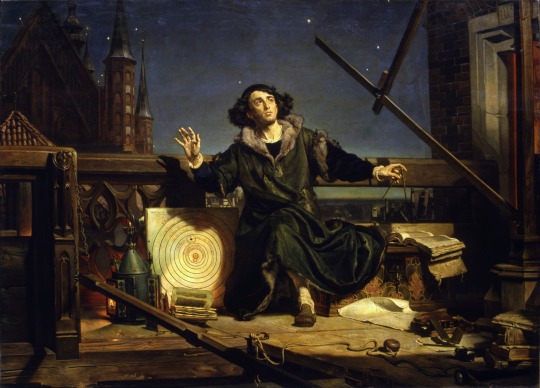
Astronomer Copernicus or Conversations with God (1872) by Jan Matejko.
Jan Matejko (1838-1893) was a Polish painter, known for depicting important events and figures from Polish history. He spent most of his life in Krakow.
The original painting can be found in Collegium Novum Assembly Hall of Jagiellonian University. Mikołaj Kopernik / Nicolaus Copernicus is one of its famous students.
#poland#cracow#kraków#krakow#polish art#polish painting#historical paiting#fine arts#jan matejko#copernicus#kopernik był kobietą#jagiellonian university#uj
16 notes
·
View notes
Text
The Jagiellonian University a public research university in Kraków, Poland.
The Jagiellonian University a public research university in Kraków, Poland.
The main assembly hall of the university’s Collegium Maius.
The Jagiellonian University (Polish: Uniwersytet Jagielloński (UJ) a public research university in Kraków, Poland. Founded in 1364 by King Casimir III the Great.
The Jagiellonian University comprises 16 Faculties, where nearly 4 thousand academic staff conduct research and provide education to almost 40 thousand students, within the…
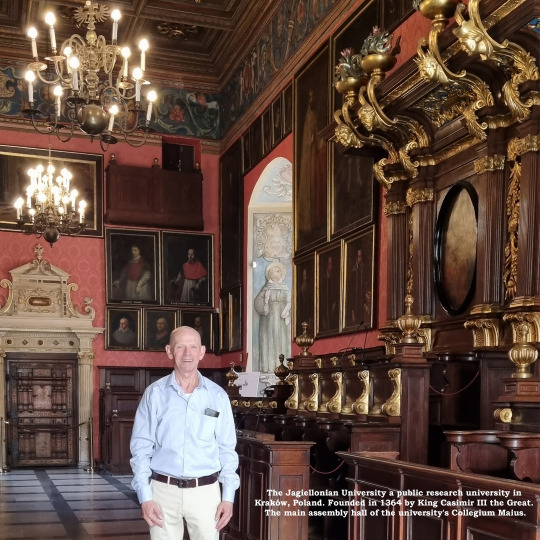
View On WordPress
#Andrzej Duda#Jagiellonian University#John III Sobieski#King Casimir III the Great#King of Poland#Kraków#Krakow#Nicolaus Copernicus#Nobel Prize in Literature#Notable alumni#Poland#Polish Enlightenment#Pope John Paul II#President of the Republic of Poland#Renaissance#Stanisław Lem#the first UNESCO World Heritage Site in the world#The Jagiellonian University#the theory of Heliocentrism#UJ#Uniwersytet Jagielloński#Wawel Royal Castle#Wisława Szymborska
6 notes
·
View notes
Text
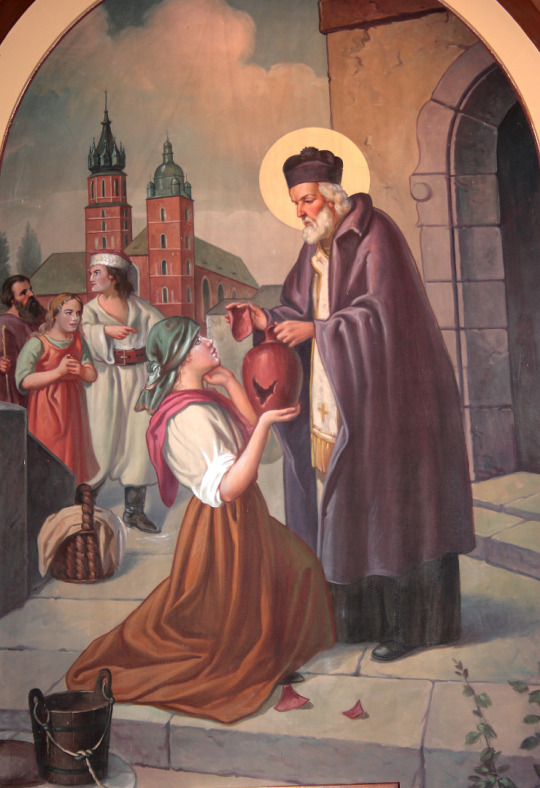
THE DESCRIPTION OF SAINT JOHN CANTIUS
The Patron of Poland, Lithuania and Jagiellonian University
Feast Day: December 23
The great scholar of Poland, John Cantius or John of Kanty, was born on June 23, 1390, in Kęty, Oświęcim, Crown of the Kingdom of Poland (now known as Kraków), to Anna and Stanisław Kanty.
After his ordination, he taught for many years at the University of Kraków (now Jagiellonian University) at which he attained bachelor, and licentiate, endeavoring to train his students not only in science, but also in spirituality. He distinguished himself as an orthodox teacher of the faith. He was never weary of telling his students to fight false opinions, but he added: 'Let your weapons be patience, sweetness and love. Roughness is bad for your own soul and spoils the best cause.'
John was known to lead a strict life, sleeping on the bare floor and never eating meat. When he was warned to look after his health, he replied: 'The fathers of the desert were notably long-lived despite their fasting and penance.'
One day as he was dining, a beggar passed by the door of his residence. At once, he carried out all his food to the poor man. When he returned to his seat, he found his plate again full of food. This was long commemorated in the university by setting aside a special meal for a poor person every day. For a time, he was assigned at Olkusz (situated in the Lesser Poland Voivodeship), proving himself a zealous and beloved parish priest.
There is a story of a time when he encountered a crying servant girl who had dropped and broken a jug, and who was in dread of being punished. John prayed for her as he helped her pick up the pieces of the jug. His prayers made the broken jug whole again, and the water with which it had been filled had turned into sweet, rich milk.
On December 24, 1473, John died while living in retirement at his alma mater at the age of 83. Pope Clement XIII said of him: 'He deserves a place among the great scholars who practice what they preach.'
His feast day was first inserted into the General Roman Calendar in 1770, it was initially assigned to October 20th, but in the calendar reform of 1969 it was moved to December 23rd, the day before the anniversary of his death. Beatified by Pope Clement X in 1676, named as the patron of Poland and Lithuania by Pope Clement XII in 1737, and canonized as a saint by Pope Clement XIII in 1767. The Roman Breviary distinguishes him with three hymns; he is the only confessor not a bishop who has been given this honor in the Catholic liturgy.
His major shrine can be found at the Church of St. Anne in Kraków, Poland.
#random stuff#catholic#catholic saints#john kanty#john cantius#juan cancio#poland#lithuania#jagiellonian university
1 note
·
View note
Text
48 notes
·
View notes
Text
New petroglyphs discovered at Castle Rock Pueblo on Mesa Verde plateau, including some used for astronomical observations and calendars have challenged perceptions of the settlement.
50 notes
·
View notes
Text
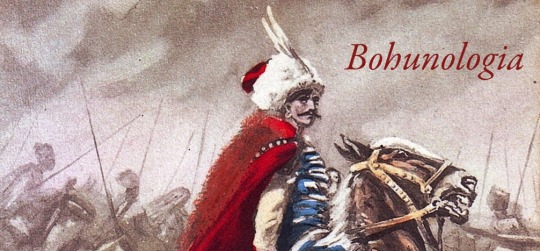
Jurko Bohun and romantic Cossack heroes from the writings of Juliusz Słowacki (1809–1849), one from the major figures of the Polish literature
Fragment of an article by Tadeusz Bujnicki (b. 1933), Professor of literary studies from the Jagiellonian University in Kraków, specializing himself in the Polish literature from the 19th century, and in particular - in Henryk Sienkiewicz's writings and their reception in the modern Polish culture. In his study he sums up the results of research of various scholars, showing us, to what extent H. Sienkiewicz was inspired by the Romantic tradition and the writings of Juliusz Słowacki (Beniowski, The Silver Dream of Salomea, Żmija):
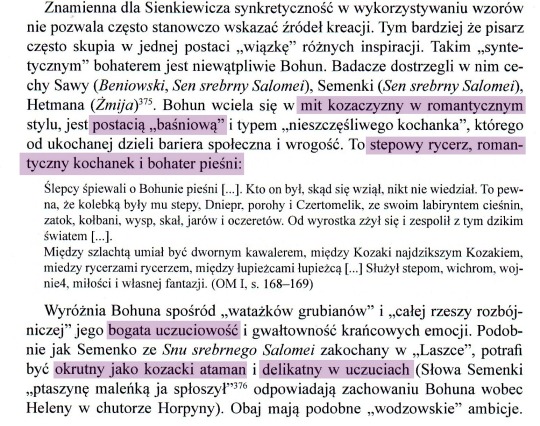

My imperfect English translation (quotations from the novel "With Fire and Sword" in Jeremiah Curtin translation):
The syncretism in using patterns, typical of Sienkiewicz, often makes it impossible to clearly indicate the sources of his inspiration. Moreover, the writer often brings together a “bundle” of various inspirations in one character. Bohun is undoubtedly such a “synthetic” hero. Researchers noticed in him the features of Sawa (Beniowski, The Silver Dream of Salomea), Semenko (The Silver Dream of Salomea), and Hetman (Żmija). Bohun embodies the Romantic Cossack myth, he is a “fairy-tale” character and a type of “tragic lover” who is separated from his beloved by a social barrier and hostility. He is a steppe knight, a romantic lover and a hero of (epic) songs:
Blind minstrels sang songs of Bohun […] Who he was, whence he had come, was known to no man. This much was certain, — the steppes, the Dnieper, the Cataracts, and Chertomelik, with its labyrinth of narrows, arms, islands, rocks, ravines, and reeds, had been his cradle. From childhood he had lived and communed with that wild world. […] Among nobles he knew how to be a polished cavalier; among Cossacks he was the wildest of Cossacks. In knightly company he was a knight; among robbers, a robber. […] He served the steppes, the whirlwinds, war, love, his own fancy.
Bohun is distinguished from the “rude leaders” and “the whole robber herd” by his rich emotionality and the fierceness of extreme emotions. Like Semenko from The Silver Dream of Salomea, being in love with “Laszka”, he can be cruel as a Cossack ataman and gentle in his feelings (Semenko’s words “I have scared the little bird” correspond to Bohun’s behaviour towards Helena in Horpyna’s cottage). They both have similar “leadership” ambitions. Bohun boasting to Helena (“I will […] give you half the Ukraine; for though I am a Cossack, not a noble, I am a bunchuk ataman. Under me are ten thousand men”), repeats Semenko’s words: “I was [...] brought up to be a hetman, not a peasant”. Bohun, despite the cruelty of his actions, the ruthlessness of revenge and savagery, is portrayed in the novel as a harmed person who does not deserve the reader’s condemnation. “The beautiful ataman” arouses sympathy as a tragic lover whose revenge drives him to Khmelnytsky’s camp.
Source: T. Bujnicki, Wpływ Słowackiego na Sienkiewiczowski obraz Ukrainy w Trylogii, [in:] idem, Trylogia w kontekstach, Kraków 2019, p. 141-142.
Another piece of "Bohunologia":
@pomarlisko, let's talk about Juliusz Słowacki;-)))
I don't know, how it is possible, that there was hardly nothing about all these connections between Słowacki and Sienkiewicz on my blog before...
#bohunologia#jurko bohun#ogniem i mieczem#with fire and sword#trylogia#henryk sienkiewicz#juliusz słowacki#romanticism#polish literature#polish heritage#cossack heroes#trylogia sensem życia
33 notes
·
View notes
Note
just found a research paper called "Conceptual blends in the audiovisual translation of the House, M.D. TV series" by Magdalena Wermińska for the jagiellonian university. it's pretty cool check it out
ahhh i will!! and it's from poland too that's cool! <3 seems like we poles like to write our theses about house md because by googling this one i found two other papers, "Translating conversational humour. The case study of House M.D." by Ewa Żmudzin-Zielińska and "Conceptual blending in House M.D." by Monika Cichmińska and Marta Topolewska
34 notes
·
View notes
Text
In 2005 Paweł Koteja with Edyta Sadowska and colleagues from the Jagiellonian University (Poland) started a multidirectional selection on a non-laboratory rodent, the bank vole Myodes (= Clethrionomys) glareolus.[43] The voles are selected for three distinct traits, which played important roles in the adaptive radiation of terrestrial vertebrates: high maximum rate of aerobic metabolism, predatory propensity, and herbivorous capability. Aerobic lines are selected for the maximum rate of oxygen consumption achieved during swimming at 38°C; Predatory lines – for a short time to catch live crickets; Herbivorous lines – for capability to maintain body mass when fed a low-quality diet “diluted” with dried, powdered grass. Four replicate lines are maintained for each of the three selection directions and another four as unselected Controls.
After approximately 20 generations of selective breeding, voles from the Aerobic lines evolved a 60% higher swim-induced metabolic rate than voles from the unselected Control lines. Although the selection protocol does not impose a thermoregulatory burden, both the basal metabolic rate and thermogenic capacity increased in the Aerobic lines.[44][45] Thus, the results have provided some support for the “aerobic capacity model” for the evolution of endothermy in mammals.
More than 85% of the Predatory voles capture the crickets, compared to only about 15% of unselected Control voles, and they catch the crickets faster. The increased predatory behavior is associated with a more proactive coping style (“personality”).[46]
During the test with low-quality diet, the Herbivorous voles lose approximately 2 grams less mass (approximately 10% of the original body mass) than the Control ones. The Herbivorous voles have an altered composition of the bacterial microbiome in their caecum.[47] Thus, the selection has resulted in evolution of the entire holobiome, and the experiment may offer a laboratory model of hologenome evolution.
they are breeding supervoles in the labs. we need more of this. we need super wolves to eat the extra deer. and those pigs that are causing problems. make them hate the taste of human babies
34 notes
·
View notes
Text

Zofia Majmeskuł was the first woman in Poland who obtained a doctor of law degree (Jagiellonian University, Kraków, 1923).
🇵🇱
#radfem#radical feminism#radfem safe#radblr#radfems do interact#feminism#radfems do touch#women's rights#women's liberation#women's education#women's right to education#university for women#women on universities#law#law degree#poland#polish history#polska historia#prawa kobiet#zofia Majmeskuł#women in history#herstory#polska#polska kobieta#polskie kobiety#uniwersytet Jagielloński#jagiellonian university#polish#polish tag#polishcore
18 notes
·
View notes
Text
Orchids by Jan Włodek, 1925

Detail of an Autochrome of blooming orchids in the greenhouse of the Botanical Garden of the Jagiellonian University, Kraków, 1925
View on WordPress

Jan Zdzisław Włodek :: Cattleya Schönbrunnensis. Kraków, Ogród Botaniczny UJ, 1925. Photo of blooming orchids in the greenhouse of the Botanical Garden of the Jagiellonian University (UJ). Autochrome. | src Archive of the Włodek Family
View more on WordPress
#1920s#autochrome#autochrom#autokrom#additive color screen plate#Autochrome#Lumière Autochrome#botanical#botanical garden#botanical studies#botanicals#botany#flower portrait#Jan Z. Wlodek#Jan Zdzisław Włodek#Jana Zdzisława Włodka#orchids#polish photographer#jan wlodek#wlodek#early color photography#early colour
111 notes
·
View notes
Text
youtube
Have you ever heard Largo al factotum played on a mechanical clock? Here is something amazing.
8 notes
·
View notes
Text
SAINT OF THE DAY (October 22)
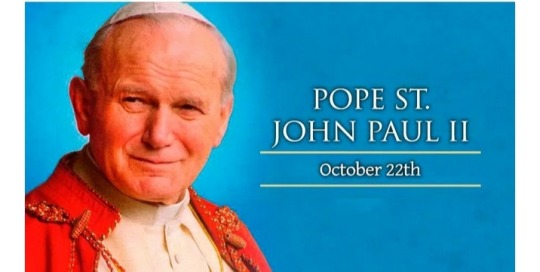
Saint John Paul II is perhaps one of the most well-known pontiffs in recent history.
He is most remembered for his charismatic nature, his love of youth and his world travels, along with his role in the fall of communism in Europe during his 27-year papacy.
Karol Józef Wojtyla, known as John Paul II since his October 1978 election to the papacy, was born in the Polish town of Wadowice, a small city 50 kilometers from Krakow, on 18 May 1920.
He was the youngest of three children born to Karol Wojtyla and Emilia Kaczorowska.
His mother died in 1929. His eldest brother Edmund, a doctor, died in 1932. His father, a non-commissioned army officer, died in 1941. A sister, Olga, had died before he was born.
He was baptized on 20 June 1920 in the parish church of Wadowice by Fr. Franciszek Zak, made his First Holy Communion at age 9, and was confirmed at 18.
Upon graduation from Marcin Wadowita high school in Wadowice, he enrolled in Krakow's Jagiellonian University in 1938.
The Nazi occupation forces closed the university in 1939 and young Karol had to work in a quarry (1940-1944).
He then worked in the Solvay chemical factory to earn his living and to avoid being deported to Germany.
In 1942, aware of his call to the priesthood, he began courses in the clandestine seminary of Krakow, run by Cardinal Adam Stefan Sapieha, archbishop of Krakow.
At the same time, Karol Wojtyla was one of the pioneers of the "Rhapsodic Theatre," also clandestine.
After the Second World War, he continued his studies in the major seminary of Krakow, once it had re-opened, and in the faculty of theology of the Jagiellonian University.
He was ordained to the priesthood by Archbishop Sapieha in Krakow on 1 November 1946.
Shortly afterwards, Cardinal Sapieha sent him to Rome where he worked under the guidance of the French Dominican, Garrigou-Lagrange.
He finished his doctorate in theology in 1948 with a thesis on the subject of faith in the works of St. John of the Cross (Doctrina de fide apud Sanctum Ioannem a Cruce).
At that time, during his vacations, he exercised his pastoral ministry among the Polish immigrants of France, Belgium and Holland.
In 1948, he returned to Poland and was vicar of various parishes in Krakow as well as chaplain to university students.
This period lasted until 1951 when he again took up his studies in philosophy and theology.
In 1953, he defended a thesis on the "Evaluation of the possibility of founding a Catholic ethic on the ethical system of Max Scheler" at Lublin Catholic University.
He became professor of moral theology and social ethics in the major seminary of Krakow and in the Faculty of Theology of Lublin.
On 4 July 1958, he was appointed titular bishop of Ombi and auxiliary of Krakow by Pope Pius XII.
He was consecrated by Archbishop Eugeniusz Baziak on 28 September 1958 in Wawel Cathedral, Krakow.
On 13 January 1964, he was appointed archbishop of Krakow by Pope Paul VI, who made him a cardinal on 26 June 1967 with the title of S. Cesareo in Palatio of the order of deacons, later elevated pro illa vice to the order of priests.
Besides taking part in Vatican Council II (1962-1965) where he made an important contribution to drafting the Constitution Gaudium et spes, Cardinal Wojtyla participated in all the assemblies of the Synod of Bishops.
The Cardinals elected him Pope at the Conclave of 16 October 1978. He took the name of John Paul II.
On October 22, the Lord's Day, he solemnly inaugurated his Petrine ministry as the 263rd successor to the Apostle.
His pontificate, one of the longest in the history of the Church, lasted nearly 27 years.
Driven by his pastoral solicitude for all Churches and by a sense of openness and charity to the entire human race, John Paul II exercised the Petrine ministry with a tireless missionary spirit, dedicating it all his energy.
He made 104 pastoral visits outside Italy and 146 within Italy. As Bishop of Rome, he visited 317 of the city's 333 parishes.
He had more meetings than any of his predecessors with the People of God and the leaders of Nations.
More than 17,600,000 pilgrims participated in the General Audiences held on Wednesdays (more than 1160), not counting other special audiences and religious ceremonies [more than 8 million pilgrims during the Great Jubilee of the Year 2000 alone], and the millions of faithful he met during pastoral visits in Italy and throughout the world.
We must also remember the numerous government personalities he encountered during 38 official visits, 738 audiences and meetings held with Heads of State, and 246 audiences and meetings with Prime Ministers.
His love for young people brought him to establish the World Youth Days.
The 19 WYDs celebrated during his pontificate brought together millions of young people from all over the world.
At the same time, his care for the family was expressed in the World Meetings of Families, which he initiated in 1994.
John Paul II successfully encouraged dialogue with the Jews and with the representatives of other religions, whom he invited several times to prayer meetings for peace, especially in Assisi.
Under his guidance, the Church prepared herself for the third millennium and celebrated the Great Jubilee of the Year 2000 in accordance with the instructions given in the Apostolic Letter Tertio Millennio adveniente.
The Church then faced the new epoch, receiving his instructions in the Apostolic Letter Novo Millennio ineunte in which he indicated to the faithful their future path.
With the Year of the Redemption, the Marian Year and the Year of the Eucharist, he promoted the spiritual renewal of the Church.
He gave an extraordinary impetus to Canonizations and Beatifications, focusing on countless examples of holiness as an incentive for the people of our time.
He celebrated 147 beatification ceremonies during which he proclaimed 1,338 Blesseds and 51 canonizations for a total of 482 saints.
He made Thérèse of the Child Jesus a Doctor of the Church.
He considerably expanded the College of Cardinals, creating 231 Cardinals (plus one in pectore) in 9 consistories.
He also called six full meetings of the College of Cardinals.
He organized 15 Assemblies of the Synod of Bishops — six Ordinary General Assemblies (1980, 1983, 1987, 1990, 1994, and 2001); one Extraordinary General Assembly (1985); and eight Special Assemblies (1980,1991, 1994, 1995, 1997, 1998 (2), and 1999).
His most important Documents include 14 Encyclicals, 15 Apostolic Exhortations, 11 Apostolic Constitutions, 45 Apostolic Letters.
He promulgated the Catechism of the Catholic Church in the light of Tradition as authoritatively interpreted by the Second Vatican Council.
He also reformed the Eastern and Western Codes of Canon Law, created new Institutions, and reorganized the Roman Curia.
As a private Doctor, he also published five books of his own: "Crossing the Threshold of Hope" (October 1994), "Gift and Mystery, on the fiftieth anniversary of my ordination as priest" (November 1996), "Roman Triptych" poetic meditations (March 2003), "Arise, Let us Be Going" (May 2004) and "Memory and Identity" (February 2005).
In the light of Christ risen from the dead, on 2 April A.D. 2005, at 9:37 pm, while Saturday was drawing to a close and the Lord's Day was already beginning, the Octave of Easter and Divine Mercy Sunday, the Church's beloved Pastor, John Paul II, departed this world for the Father.
From that evening until April 8, date of the funeral of the late Pontiff, more than three million pilgrims came to Rome to pay homage to the mortal remains of the Pope.
Some of them queued up to 24 hours to enter St. Peter's Basilica.
On April 28, the Holy Father Benedict XVI announced that the normal five-year waiting period before beginning the cause of beatification and canonization would be waived for John Paul II.
The cause was officially opened by Cardinal Camillo Ruini, vicar general for the diocese of Rome, on 28 June 2005. He was beatified on 1 May 2011.
On 27 April 2014, he was canonized by Pope Francis during a ceremony in St. Peter's Square.
In an April 24 message sent to the Church in Poland, Pope Francis gave thanks for the 'great gift' of the new Saint, saying of John Paul II that he is grateful, "as all the members of the people of God, for his untiring service, his spiritual guidance, and for his extraordinary testimony of holiness."
#Saint of the Day#Saint John Paul II#Pope John Paul II#Karol Józef Wojtyla#World Youth Day#World Meetings of Families#Great Jubilee of the Year 2000#College of Cardinals
10 notes
·
View notes
Photo

(via The Jagiellonian University a public research university in Kraków, Poland.)
#university#poland#krakow#jagiellonian#copernicus#duda#president#collegium maius#john paul ii#wawel castle#jagiellonian university
0 notes
Photo

Feeling the Pressure
Exacerbated by lifestyle factors like poor diets and insufficient exercise, high blood pressure, or hypertension, is a common problem thought to affect around a third of us worldwide. Putting our organs under strain, persistent hypertension increases the risk of heart disease and stroke, along with impaired cognition and dementia. To better understand how hypertension impacts brain function, a recent study used a database of information from thousands of patients to investigate links between genetic data, blood pressure, properties of the brain and fluid intelligence, a measure of problem-solving and flexible thinking ability. Using MRI scans, researchers identified brain areas most affected by hypertension (pictured in yellow, with especially sensitive sections in red), and among these, areas in which blood pressure-related changes are associated with reduced cognitive function. Knowing which parts of the brain to target could facilitate the use of brain imaging to assess patients’ risk of developing dementia.
Written by Emmanuelle Briolat
Image by Dr Lorenzo Carnevale, IRCCS INM Neuromed, Pozzilli, Italy
Research by Mateusz Siedlinski et al, Department of Internal Medicine, Jagiellonian University Medical College, Krakow, Poland
Image copyright held by Dr Lorenzo Carnevale, IRCCS INM Neuromed, Pozzilli, Italy
Research published in the European Heart Journal, March 2023
You can also follow BPoD on Instagram, Twitter and Facebook
#science#biomedicine#blood pressure#high blood pressure#hypertension#dementia#stroke#heart disease#mri scan#body imaging
16 notes
·
View notes
Text
Quite a difference in age between the temple remains and the human burials. I firmly believe that sacred sites often remain sacred, even after the passage of millennia.
21 notes
·
View notes